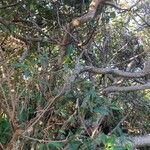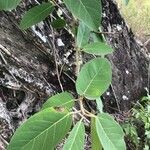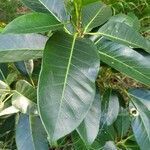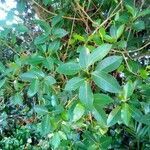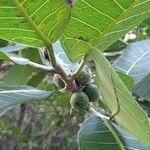A fig. It is a tree. It germinates in the tops of trees and it grows attached to the trees until the roots contact the ground It strangles the tree becoming a free-standing tree. It can be 30 m tall. The size and shape of the leaves varies. They are usually 10 cm long. They can have a wedge shaped or heart shaped base. They are green and turn yellow when ripe. They can be 1 cm across.
